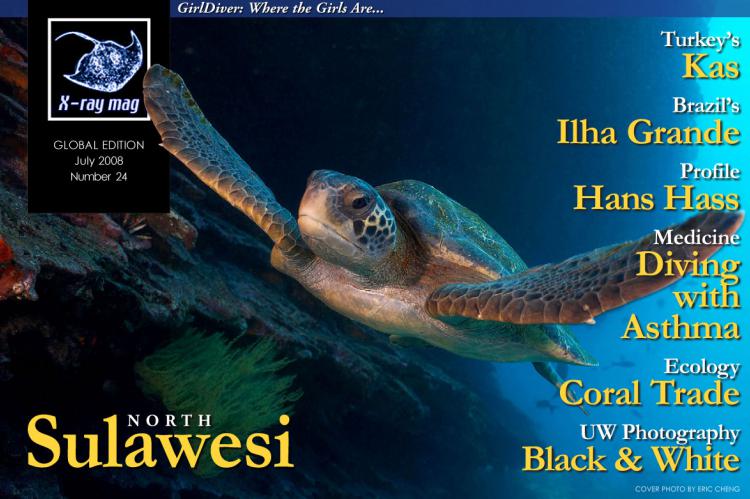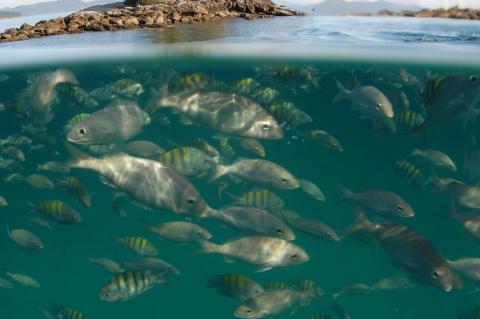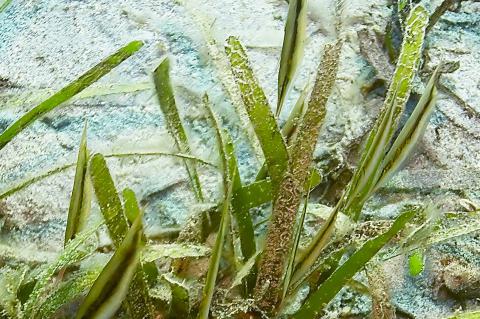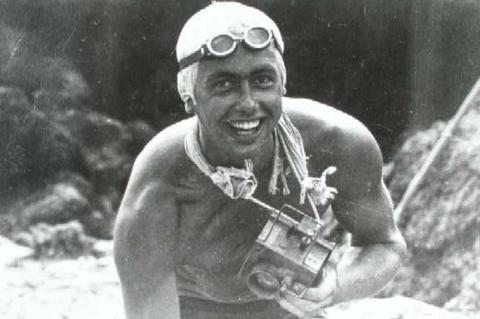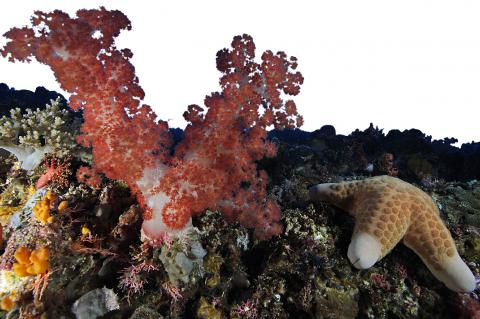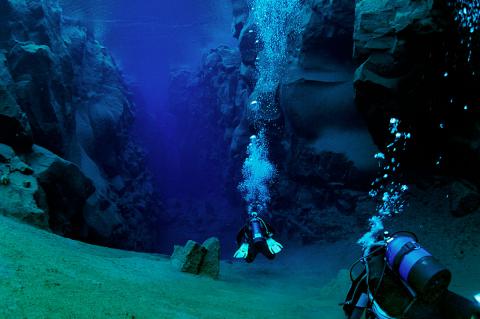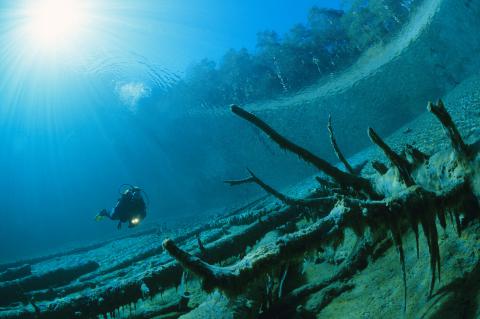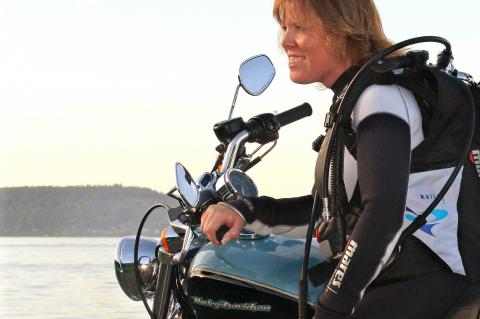X-Ray Mag #24
Our main travel feature in issue #24 is North Sulawesi where Wolfgang Pölzer visits Bunaken and Lembeh. Harald Apelt takes us to another Mediterranean pearl, the picturesque little port town of Kas in Turkey, while Arnold Weisz takes another dip in Brazilean waters by visting Ilha Grande, the resort island with no cars. Arnold also writes about the coral trade. Kurt Amsler shows us how to make great black and white images but, more importantly, he continues his mission to save the seaturtle from illegal hunting in Indonesia. Our new dive doctor, Kevin Chan MD, from Singapore writes about diving with asthma. In our new column, GirlDiver by Cindy Ross, we find out where the girls are. This issue's unique dive site is Lake Thingvellir on Iceland, and the portfolio section features painter Jens Poulsen of Denmark.
Main features in this issue include:
Black & White
Even in the digital age, black and white photographs are still viewed as art. In this edition of my underwater photography series, I’ll give you an introduction to contrast imaging.
The black and white photographer has four different venues to explore. First of all there is, obviously, using black and white film. Secondly, you can use color slide film and convert the images into black and white after scanning.
Brazil’s Ilha Grande
There are a few places on this planet where things seem to fall into place without any hesitation. Ilha Grande, Brazil, is one of these places. Even on busy weekends, there is a no-stress atmosphere. On the beach, in the garden hammock, or at 20 metres depth—it’s all laid back and lazy.
All things connected—the lush green forrests, tiny quiet villages on the water’s edge, deserted beaches, wooden schooners anchored in the bays, and the attractions of the deep azur ocean.
Corals for sale
The exploitation of corals has depleted stocks all over the world. This is not only destroying the seafloor, but has a much wider impact. Corals are more valuable if they stay in the oceans rather than around someone’s neck.
Coral reefs support more than 25 percent of all known marine fish species. As one of the most complex ecosystems on the planet, coral reefs are home to more than 4,000 different species of fish, and almost 5,000 species of corals, in addition to thousands of other plants and animals.
Find Wally
Is it mimicry, mimesis or camouflage?
Mimicry is one of several anti-predatory devices found in nature. Specifically it is a situation in which one species called the mimic resembles in colour, form, and/or behaviour another species called the model.
Hans Hass
Many, many divers, underwater photographers and filmmakers, when asked about the origin of their passion to go underwater, say that they were inspired by the films and books of Hans Hass. He must be a very remarkable person, interesting to listen to, not to mention, Dr Hass is the greatest celebrity in the diving world today. Is it possible to meet him, to talk?
Dr Hass was born in 1919. I know this fact and am enthusiastic about meeting him. He is the megastar in the diving research constellation. He gave thousands of interviews...
I wondered, would it will be interesting for him to tell his stories once more?
Kas, Turkey
Pearls of the Mediterranean: From high speed to slow down
During the 210-kilometer taxi transfer from the airport to Kas, there was no conversation with Mehmet—not a word—but I learned a lot about life here on the goose chase through Antalya’s metropolis of around 700,000 inhabitants.
North Sulawesi Unplugged
I can’t help likening this island to a chromosome. It’s contorted shape not only looks like one, but also has its different features spread out along different points even when you zoom in. Our focal point is the northern region. On the western side of the tip, we find Bunaken national park with its majestic drop-offs, on the top of the area around Gangga Island, and on the eastern side, Lembeh, famous for its critter diving.
Previously known as Celebes, Sulawesi is Indonesia’s fourth largest island, and it is at its northeastern tip where we find the region famous for having a number of the best dive spots in the world.
Thingvellir, Iceland
As I slide out of the shallow basin and drag myself past the top edge of the drop-off, I find myself hovering in an empty void. Between me and the rock plateau far beneath me, I seem to have nothing but a clear space. It is almost disturbing. Aside from the feeling of drag when moving, it is almost impossible to detect the water we are in.
In essence, we are diving in the part of the crack that opens up between America and Europe as the continents drifts apart.
Underwater Austria
Completely landlocked doesn’t necessarily mean that diving is out of the question. Austria is best known for alpine skiing, historical Vienna and delicious cakes, but also offers some really spectacular diving. Here, one can dive wrecks and walls, enjoying a rich aquatic life in lakes with great visibility.
Together with countries like Norway, Sweden, Iceland and Finland, mountainous Austria is one of the areas in Europe richest in freshwater. And the water is clean. Ninety-nine percent of Austrians have access to potable ground- and spring water.
Where the Girls Are…
Gorgeous neoprene clad GirlDivers have long graced the covers of the scuba periodicals, gear catalogues and dive shop posters, but lately, there seems to be an increasing trend of GirlDivers actually showing up at the dive sites.
The gear is intensive, both in weight and storage considerations, as well as initial entry cost into the sport. To the women of scuba, it is but a small price to pay to be witness to the deeper arenas of life around the world.


